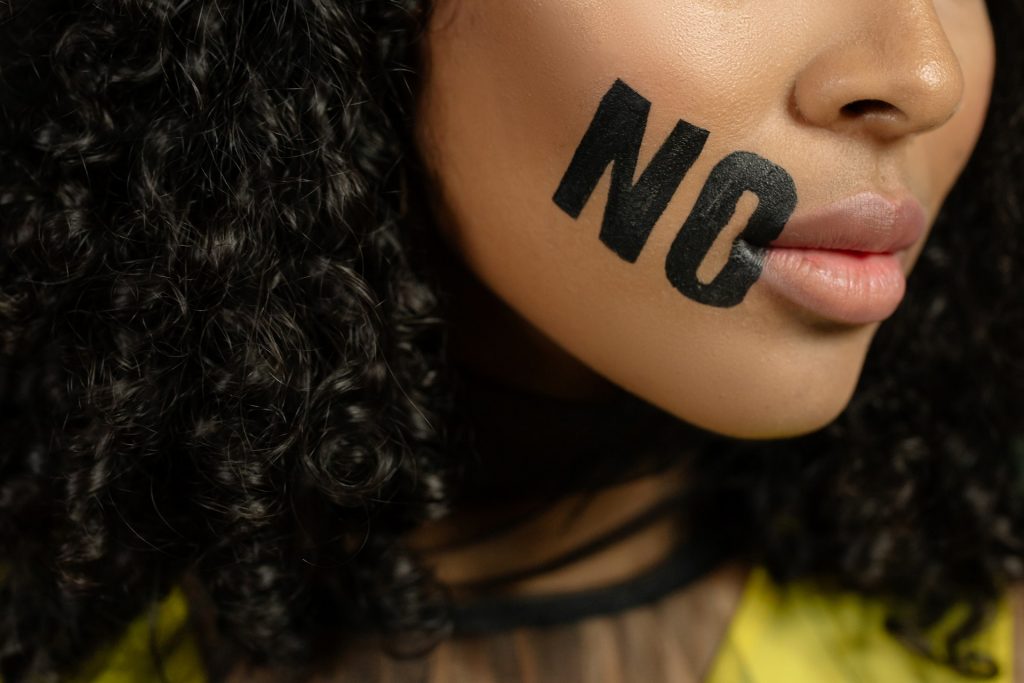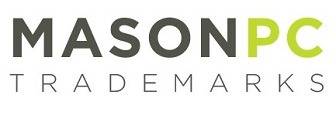You can now download our free guide to avoid rejection and maximize your brand’s protection
Amazon has recently surpassed Walmart as the largest US retailer, and e-commerce is predicted to account for 29% of retail sales by 2025.
Stay-at-home orders across the globe have surely pushed the number even higher than what had been predicted even two years ago. Retailers that were successful without an e-Commerce strategy may have been pushed towards the e-Commerce model within the past year as a result of the COVID-19 pandemic.
For those retailers that were left with an urgent need to set up e-Commerce during the pandemic, or those businesses that already had an aggressive e-Commerce strategy, Amazon offers Amazon Stores to help create a customized, branded storefront (sellers must be enrolled in the brand registry to create an Amazon Storefront) and sponsored Ads to drive traffic to the store. Amazon also offers fulfilment that helps with packing, shipping and customer service. Amazon account representatives also provide guidance and recommendations, as well as helping with any potential issues.

While an Amazon listing will undoubtedly achieve this increase in sales, it also leaves these retailers open to unscrupulous sellers who may benefit from having unlimited online access to brands to possibly create copies of original products. These counterfeiters may even sell these copied items on Amazon, taking sales away from the brand owners and their businesses, as well as possibly affecting the reputation of the brand.
Of course, each government has a body in place to govern and administer intellectual property rights. In Canada, this body is referred to as the Canadian Intellectual Property Office (CIPO), and it is this office that decides who has ownership of a brand through what is referred to as a registered trademark. This is a common method for businesses to protect their brand. However, to protect Amazon sellers and to prevent counterfeit products from flooding its own marketplace, Amazon has created a Brand Registry Program that identifies and protects the rightful brand owners from intellectual property theft. The program provides sellers access to a dedicated support team that assists with complaints about intellectual property infringement, listing issues and marketing tools specifically for brand owners.
Being registered with the Amazon Brand Registry, protects the seller who is identified as the brand owner on Amazon, but also increases the likelihood that Amazon’s algorithm will identify these store’s products for buyers searching for that particular item.
This paper will serve as a primer on the basics of trademarks, the amazon brand registry and what they can do for your brand- both independently and in conjunction.
What is a Trademark and what are the benefits of having one?
Trademarks are marks used by a person to distinguish their goods and services from others. The purpose of trademarks is to protect against consumer confusion between two products in the market to ensure the origin and quality of the product. This in turn protects the owner of the trademark by ensuring that they obtain the benefits of the goodwill and reputation associated with the trademark. In the context of Amazon’s platform, the relevant trademarks are the distinguishing names, logos and symbols that sellers use to identify themselves and their products, and that Amazon is attempting to protect with its brand registry.

Trademarks can be either unregistered or registered, both providing the intended protection. Initially, if trademarks are being “used” and accrue goodwill in the market they exist as “unregistered trademarks” (or “Common Law Trademarks”) and the owner automatically obtains common law trademark rights. They are not officially filed and registered with CIPO, but rather exist due to their use in the market, and continue to exist as long as they are used.
These rights will exist in the particular geographic place the trademarks are used. Although there are no immediate implications associated with having unregistered trademark rights, if another party infringes on your trademark rights you will have to prove you hold these rights, by showing you “used” your trademark over a period of time and the trademark has gained sufficient goodwill or reputation.
“Registered trademarks,” on the other hand, are officially filed and registered with CIPO. You can register a word, design or both, among other marks, as a trademark. When you register your trademark with the CIPO you obtain legal rights over the trademark for 10 years. Some of the advantages of registered trademarks are that you have exclusive rights to use that trademark, registered trademarks are easier to enforce (because you don’t have to “prove” your rights as with unregistered trademarks), they deter potential infringement, and they help with protecting your brand online. Registered trademark rights are only protected in the particular jurisdiction where they are registered. For example, if you register a trademark in Canada, you are only protected under Canadian jurisdiction, and not automatically protected in another country. Each country has their own process for accepting trademark registrations and as such.
In Canada, a business may register its trademark through a process referred to as “trademark prosecution”. This “prosecution” must be completed by a registered trademark agent, recognized by the Canadian Government. A trademark agent will represent the business brand and file the application with the Canadian government for approval. This process is very similar in the United States. Unfortunately, trademark rights associated with a registered trademark are not fully available until the application is approved and the business obtains the trademark registration. At present, there is a backlog at the CIPO for registering trademarks of up to two years, even for brand new (uncontested) applications. Of note, as of May 2021, CIPO has published two notices indicating their plans to reduce this backlog by allowing trademark applicants to request an expedited examination in certain circumstances, and by putting measures in place to improve the timeliness of applications. You should still register your trademark with the appropriate intellectual property offices, as it is the strongest protection against intellectual property theft.
Generally, e-commerce networks respect intellectual property rights and will take down any infringing content upon request. With a registered trademark, third-party publishers can review the Trademarks Database themselves and then confidentially remove any infringing content. However, it is difficult to demonstrate the existence of trademark rights with only an unregistered (common law) trademark.

It is clear that the legal system does not provide sufficient protection for companies’ brands as it is slow, expensive and limited to certain jurisdictions. In order to fill these gaps, Amazon has created the Amazon Brand Registry to make brand protection more accessible.
What is the Amazon Brand Registry and What can it do for your brand?
As previously mentioned, e-commerce has been gradually increasing market share, as retailers adapt and sell through websites online to become more accessible to their consumer base. As brands become available online and products are visible to the entire globe, the potential for intellectual property theft intensifies. Amazon has established a system to help protect your brand while utilizing their platform. The Amazon Brand Registry is an Amazon program that allows verified brand owners access to enhanced reporting tools and the ability to control their brand across Amazon.
In addition to helping Amazon businesses protect their intellectual property rights, the Amazon Brand Registry also offers tools that help promote business’ brands, assist in establishing transactions, shipping and distribution of products to foreign countries, and helps protect images displaying the business logo. The Amazon Brand Registry also creates product listings including the brand name, the full product has already been listed.
Once a business is enrolled in the Amazon Brand Registry, it will be the only authorized seller to transact under that brand, unless the business permits an additional representative to sell products on behalf of the business brand, by submitting a request to the registry. This system offers businesses increased control over Amazon product pages that have its brand name so that customers are more likely to see the correct information associated with the product’s brand.

By participating in the Amazon Brand Registry, businesses will be able to enforce their rights on Amazon, while the trademark application at the intellectual property office is pending.
Although verification issues have arisen while registering certain trademarks to the Amazon Brand Registry that have previously been submitted to CIPO for approval (because Amazon was unable to access contact information necessary to verify ownership of a trademark), Amazon’s services have been able to mitigate this issue by allowing brand owners to complete Amazon’s brand registry ownership verification process for Canadian trademark registrations by providing contact information for their lawyer in the event that trademark ownership must be verified.
Amazon provides additional tools such as Enhanced Brand Content, Stores, Sponsored Brands and the Brand Dashboard. As of 2020, the Enhanced Brand Content on Amazon has been rebranded as “A+”, this tool allows brand owners to enhance brand awareness by uploading images and text modules to increase conversions. These tools are less related to your business’ intellectual property but are, to a greater extent, related to your brand as a whole. Many of these tools provide analytical insights, help you keep track of your stock, allow you to access page views, and provide ways to optimize your brand. Generally speaking, in addition to protecting you from counterfeits, being registered in the Amazon Brand registry will help you build your brand’s presence on Amazon, grow awareness of your brand on Amazon through Sponsored Brand Ads and allow you to have tools to monitor your brand analytics to improve your advertising return on investment.
Interestingly, for holders of the Amazon North America Unified Account (NAUA), trademarks that are successfully enrolled in the Brand Registry on Amazon.ca will be automatically valid for the Amazon.com Brand Registry and vice versa. If a business does not hold a NAUA, the brand registries must be entered individually.
Enrolling in the Amazon Brand Registry program has proven to be beneficial as Amazon has reported that, as a result of the Brand Registry, 99% of all Amazon page views landed on pages that had not received a notice of potential infringement.
Finally, aside from the costs associated with filling an actual trademark with your countries’ intellectual property office, there is no cost to registering with Amazon’s Brand Registry.
What are the Amazon Brand Registry requirements?

Previously, to be eligible for an Amazon Brand Registry application, the brand must have had an active registered trademark in the country where it wished to enroll.
However, as of November 2020, Amazon has loosened its restrictions, from requiring brands to have a registered trademark, to requiring brands to have only filed an application for a trademark in a recognized jurisdiction. Amazon only accepts trademarks that have been issued or applied for in certain government trademark offices, including United States, Brazil, Canada, Mexico, Australia, India, Japan, France, Germany, Italy, Spain, the United Kingdom, and the European Union, Turkey and the United Arab Emirates. It is possible that this relaxed requirement may be changed back to its previous iteration in the future, as this policy may be exploited by fraudulent sellers on the Amazon platform. Both the trademark and the Amazon Brand Registry are regional and are enforceable only in the region in where they have enrolled. Meaning that you can only protect and enforce your trademark in the jurisdictions (countries) in which you have registered your trademark(s). Similarly, the Amazon Brand Registry can only protect your brand in the country in which you have applied for a trademark. The Amazon Brand Registry will only allow businesses to enroll in countries where there is at a minimum a pending trademark.
Once the business meets the eligibility requirements it can enroll the brand(s) by providing the following information:
- the brand name that has an active registered trademark
- the trademark registration number
- a list of product categories in which your brand’s products should be listed and
- a list of countries where the brand’s products are manufactured.
The trademark must be in the form of a text-based mark or an image-based mark with words, letters, or numbers. The trademark must appear on your products or the product packaging.
How to use the Brand Registry to protect your brand?
Typically, when an infringement occurs, one would need to contact a lawyer to battle out a potential infringement in court. Enrollment in this program allows businesses to report potential intellectual property infringements through the “report a violation tool”. Only an intellectual rights owner, such as a brand who owns a trademark, or their representative agent are permitted to inform Amazon of an alleged trademark infringement through the “report a violation” tool. The process works by a brand registry admin or a registered trademark agent accessing the “report a violation” tool through the main Brand Registry page. From there either the admin or registered agent will select “report an intellectual property” violation and enter the appropriate marketplace of which the counterfeit product was found and the ASIN (Amazon Product Number) of that product. From there, the admin or agent will be shown the sellers that you are filling a claim against, and a claim is further filed by selecting “A Product is Counterfeit”. Subsequently, Amazon encourages those who are submitting a request to provide more information. Craig Searer, an E-Commerce Strategy Lead at Logical, recommends that the additional information you provide follows the following format: “We have identified this product as counterfeit. It is using our trademark (include trademark number) on the product or packaging. To ensure Amazon customers are receiving authentic (brand name) goods, please remove these seller(s) from this listing. Reported violations are assessed by representatives at Amazon, however, the investigation and how the violation is reviewed is confidential.
How to File a Notice of Infringement
In addition to the Report a Violation tool, Amazon also offers brand owners the option to file a notice of infringement. This option is available to trademark owners who are not enrolled in the Amazon Brand Registry. Using this method of reporting requires that a trademark owner submit a written notice of infringement. The written notice of infringement must include: the specific identification of the mark that has been infringed, the nature of the infringement, a list of the infringing products (indicated through an Amazon Product Number or ASIN) and additional information to help Amazon process the complaint. Once the notice has been submitted, brand owners will receive a confirmation that the notice is being reviewed. How Amazon assesses these infringements is not public information. If a representative from Amazon deems the notice of infringement to be valid, Amazon informs the seller in question about the claim and shares the brand owner’s contact information with the seller. Typically, brand owners receive a response from Amazon within 12 to 24 hours.
If the notice is rejected, Amazon will not remove the infringing products and will not pursue any further action. If this happens, Amazon will send the Trademark owner a notice with a reason why they rejected the application. However, if the notice is accepted, Amazon will take action against the seller in question. The actions in which Amazon takes against sellers are confidential, however, two possible actions that could be taken are a suspension or ban.
Conclusion
Protecting your trademarks and further, your brand, online is of increasing importance in the digital world. However, luckily you have ways of protecting your trademark(s) and brand while selling on Amazon through the Amazon Brand Registry and Amazon’s other tools. Ultimately, your best chance of successfully protecting your brand is to obtain all protections available, which means registering your trademark with CIPO (if you are conducting business in Canada) and enrolling in the Amazon Brand Registry.


